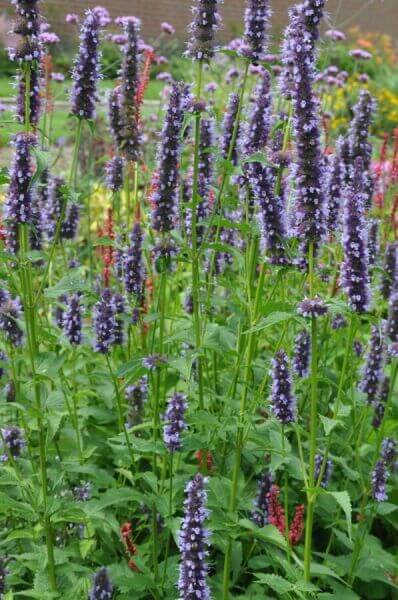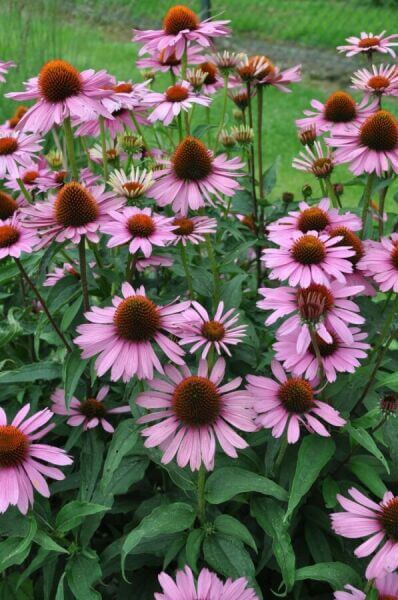Best Hedge Plants For Edging
Best Hedge Plants For Edging
Blog Article
Best Hedging Plants For Coastal Areas
Enhance your garden's attraction with rich hedge varieties such as Yew (Taxus), Thuja, Laurel, Photinia, and Bamboo, celebrated for their structural stability and environmental advantages.
Yew and Thuja provide evergreen coverage and winter season resilience, while Laurel provides quick growth and broad, aromatic leaves.
Photinia adds seasonal appeal with its lively red foliage, and Bamboo lends a low-maintenance, peaceful atmosphere.
These hedges improve air quality, decrease sound, and create tranquil, personal areas.
Proper planting, spacing, and maintenance make sure energetic growth and environmental consistency.
Explore how these rich ranges can elevate your garden's beauty and wellness.
Secret Takeaways
Change Your Garden With Lush Hedge Varieties
- Select Yew for its dense, evergreen growth and unparalleled longevity.
- Go with Laurel for its fast growth and broad leaves, guaranteeing fast personal privacy.
- Choose Photinia for its vibrant seasonal foliage, which turns a striking dark red.
- Utilize Bamboo for a low-maintenance, winter-hardy hedge with aesthetic appeal.
- Space plants 2-3 per meter and prune routinely for ideal growth and health.
Popular Hedge Plants
When transforming a garden with lavish hedge varieties, it's vital to think about popular hedge plants such as Yew, Thuja, Laurel, and Photinia due to their unique qualities and benefits.
Yew (Taxus) is extremely respected for its durability and thick, green development, making it a prime option for withstanding landscapes.
Thuja is kept in mind for its evergreen foliage and robust winter season durability.
Photinia adds seasonal vibrancy with red leaves that darken in time, developing vibrant visual appeal.
Laurel uses quick development and aromatic, broad leaves, suitable for fast privacy.
Additionally, Bamboo is an exceptional option for atmosphere, using a low-maintenance, winter-hardy choice that boosts the garden's visual with its stylish, swaying walking canes.
These choices cater to a range of horticultural needs and preferences.
Benefits of Garden Hedges
Garden hedges provide a multitude of benefits, making them an important addition to any landscape. These natural barriers are economical to carry out and supply substantial wind protection, boosting air blood circulation and adding to noise reduction. The thick foliage of hedges like Thuja and Beech ensures personal privacy by blocking presence, producing a serene and secluded environment.
Hedges also play an important function in microclimate guideline, supplying a steady environment that fosters plant development and decreases temperature fluctuations. Their complex leaf structures filter pollutants, improving air quality and adding to a much healthier garden environment.
Additionally, hedges master sound reduction, taking in and deflecting acoustic waves to lower ambient noise levels. This double functionality of supplying both visual and acoustic privacy enhances the general harmony and visual appeal of any garden.
Planting and Upkeep Tips
For a successful hedge, meticulous preparation of the planting area is essential. Ensure the soil has correct pH and drainage to support strong root advancement.
Area the plants properly for the chosen species. Water the hedge regularly throughout its initial development stage, adjusting as required with seasonal modifications.
Carry out a organized insect control and disease prevention technique, utilizing chemical or organic treatments when needed. Routinely examine for aphids, mites, and fungal infections.
Apply mulch to maintain wetness and reduce weeds. Seasonal pruning promotes dense development and air circulation, vital for plant health.
Following these standards will assist you cultivate a dynamic, well-maintained hedge that improves the appeal of your garden.
Spacing and Cutting Guidelines
Spacing and Cutting Guidelines
Correct spacing and cutting are crucial for cultivating healthy, aesthetically appealing hedges. Appropriate spacing guarantees each plant gets sufficient nutrients, light, and air flow.
Follow these guidelines for ideal hedge upkeep:
- Spacing: Position hedge plants 2-3 plants per meter to motivate robust development.
- Pruning Strategies: Regular pruning is important for maintaining preferred hedge height and shape. Trim brand-new growth in summer and cut back older wood throughout winter.
- Seasonal Care: Adjust trimming approaches and schedules according to seasonal requirements to guarantee plant health.
- Hedge Height: Frequently monitor and trim to maintain the desired hedge height and attain uniform aesthetic appeals.
Adhering to these actions will ensure your hedge grows, enhancing both the appeal and performance of your garden.
Choosing the Right Hedge
Picking the Right Hedge
Picking the appropriate hedge involves evaluating elements such as mature height, foliage density, and ecological durability. Successful hedge plant choice requires comprehending each species' growth attributes and site-specific versatility.
For example, Yew (Taxus) uses exceptional durability and thick development, while Thuja is notable for its winter season resilience. Additionally, thinking about maintenance requirements is essential; fast-growing types like Laurel or Privet need regular cutting, whereas low-maintenance options like Bamboo or Ivy may be more effective for those looking for minimal maintenance.
Environmental aspects such as soil type, light availability, and wetness conditions must also direct the selection process. This careful approach guarantees the selected hedges will prosper, providing both aesthetic and functional benefits to the garden landscape.
Delivery and Planting Advice
To ensure your hedge plants prosper, they must be provided by specialized couriers and planted immediately upon arrival.
Follow these vital steps for successful planting:
- Soil Preparation: Enrich the soil with raw material to enhance drain and nutrient content.
- Planting Depth: Create a trench two times the width and equivalent to the depth of the root ball.
- Watering Methods: Water thoroughly after planting, keeping the soil regularly damp but not saturated.
- Mulching: Use a layer of mulch to maintain moisture and reduce weeds.
Customer Assistance and Service
Provided the essential function of prompt assistance in horticultural pursuits, our consumer support team is readily available six days a week through telephone, email, and social networks to provide expert suggestions and quickly address any issues. Their commitment to quick action times guarantees consumer complete satisfaction by resolving inquiries connected to plant health, ideal planting approaches, and maintenance schedules.

6 days a week
6 days a week
This thorough support group, strengthened by a stellar 9.3/ 10 customer ranking, highlights our dedication to enhancing the gardening experience for every customer.
Frequently Asked Concerns
The Length Of Time Does It Consider Hedge Plants to Develop?
Hedge plants generally need one to 3 years to become totally established, with the exact duration varying by types and growing conditions.
Efficient care throughout this important period is essential for robust growth. Consistent watering, vigilant weed control, and suitable fertilizer application are essential in promoting strong root development.
For instance, fast-growing species like Laurel might develop more quickly, while slower-growing ranges such as Yew may take longer. Thorough maintenance speeds up the facility process, leading to dense and healthy hedges.
What Are the Finest Hedge Plants for Privacy?
The question of the finest hedge plants for personal privacy involves assessing evergreen and deciduous alternatives.
Evergreen hedges like Thuja, Laurel, and Cypress provide year-round coverage, guaranteeing constant personal privacy.
On the other hand, deciduous hedges such as Beech offer seasonal privacy, shedding leaves in chillier months.
Secret upkeep pointers for personal privacy hedges consist of regular trimming, fertilizing in spring, and proper spacing-- generally 2 to 3 plants per meter.
Furthermore, constant watering and thorough weed elimination are vital for promoting healthy, thick growth.
Can Hedge Plants Draw In Wildlife to My Garden?
Yes, hedge plants can draw in wildlife to your garden by offering necessary advantages like shelter, food, and nesting websites, therefore boosting regional biodiversity. For circumstances, yew, holly, and laurel are outstanding for drawing in birds, while ivy supports a variety of insects.
Nevertheless, it is very important to note that there are some drawbacks, such as increased upkeep to handle insects and regular maintenance. Thoroughly selecting and maintaining hedge ranges can help balance these downsides and advantages, eventually promoting a vibrant and sustainable community in your garden.
Are There Any Blooming Hedge Plants Available?
Yes, there are flowering hedge plants offered that can enhance the appeal of your garden.
For example, Elaeagnus, likewise understood as Olive Willow, produces fragrant white flowers in the fall, including a touch of elegance.
Photinia, another popular choice, showcases vibrant red leaves that develop into an abundant green, developing a vibrant visual impact throughout the seasons.
To guarantee these plants flourish, it's necessary to practice appropriate pruning methods and seasonal maintenance, such as trimming brand-new growth in the summer season and cutting back in the winter season.
These measures will help keep the health and aesthetic appeal of your blooming hedges.
How Do I Avoid Pests in My Hedge Plants?
To prevent bugs in hedge plants, employ natural insect control approaches and maintain appropriate hedge care. Present beneficial bugs like ladybugs, which victimize damaging pests, to produce a well balanced community.
Frequently inspect your hedges for indications of problem and quickly get rid of any affected parts to prevent the spread. Make sure the health of your hedges by using balanced fertilizers and providing sufficient water.
Use mulching to keep soil wetness and correct spacing to lower plant tension and promote robust development. These practices jointly assist in minimizing pest issues and maintaining a healthy hedge.
Conclusion
In essence, selecting the best hedge varieties such as Yew, Thuja, and Laurel can transform any garden into a peaceful haven. These plants provide year-round greenery, enhance visual appeal, and deal useful benefits like sound reduction and wind defense.
Proper planting methods, accurate spacing, consistent watering, and seasonal trimming are vital for optimal development.
Reliable delivery services and professional consumer support make sure a smooth experience from purchase to planting, making it simpler than ever to elevate your outside area.
Garden hedges use a wide variety of benefits, making them a valuable addition to Additional reading any landscape. These natural barriers are cost-effective to carry out and supply significant wind protection, improving air blood circulation and contributing to noise decrease. The thick foliage of hedges like Thuja and Beech makes sure privacy by obstructing exposure, producing a remote and tranquil environment.

Pruning Strategies: Regular pruning is vital for keeping preferred hedge height and shape. Cut new growth in summer and cut back older wood during winter season.
Report this page